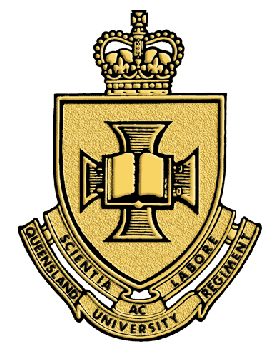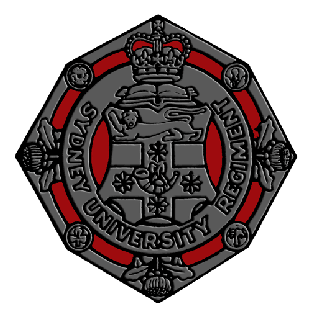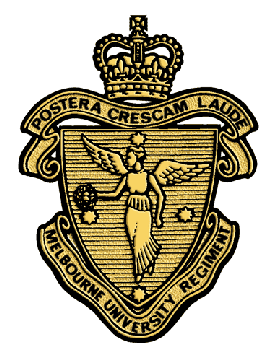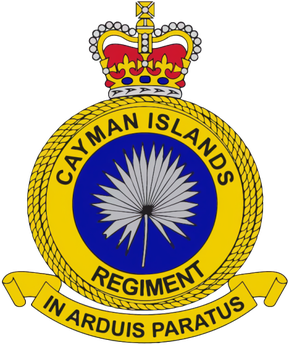
The Royal Military Academy Sandhurst, commonly known simply as Sandhurst, is one of several military academies of the United Kingdom and is the British Army's initial officer training centre. It is located in the town of Sandhurst, Berkshire, though its ceremonial entrance is in Camberley, Surrey, southwest of London. The academy's stated aim is to be "the national centre of excellence for leadership". All British Army officers, including late-entry officers who were previously Warrant Officers, as well as other men and women from overseas, are trained at the academy. Sandhurst is the British Army equivalent of the Britannia Royal Naval College and the Royal Air Force College Cranwell.

The Royal Military College, Duntroon, also known simply as Duntroon, is the Australian Army's officer training establishment. It was founded at Duntroon, in Canberra, Australian Capital Territory, in 1911 and is at the foot of Mount Pleasant near Lake Burley Griffin, close to the Department of Defence headquarters at Russell Hill. Duntroon is adjacent to the Australian Defence Force Academy (ADFA), which is Australian Defence Force's tri-service military academy that provides military and tertiary academic education for junior officers of the Australian Army, Royal Australian Air Force and the Royal Australian Navy.
Colour sergeant is a rank of non-commissioned officer found in several armies and marine corps.
Officer cadet is a rank held by military cadets during their training to become commissioned officers. In the United Kingdom, the rank is also used by members of University Royal Naval Units, University Officer Training Corps and University Air Squadron; however, these are not trainee officers with many not choosing a career in the armed forces.

Lieutenant General Sir Donald Beaumont Dunstan was an Australian Army officer who was Governor of South Australia from 23 April 1982 until 5 February 1991. A career officer, after joining the Army in 1940 during the Second World War, Dunstan graduated from the Royal Military College, Duntroon in 1942 and served as an infantry officer, seeing combat against the Japanese during the Bougainville Campaign in 1945. After the war, he served in a variety of appointments, including as commander of the 1st Australian Task Force during the Vietnam War. From 1977 to 1982 he held the appointment of Chief of the General Staff, before retiring from the Army having overseen a large-scale re-organisation. Afterwards, he became the longest-serving governor of South Australia. He died in 2011, at the age of 88.

Queensland University Regiment (QUR) is a training unit of the Australian Army Reserve. Based in Queensland, the regiment is currently assigned to the 8th Brigade. The regiment's history can be traced back to 1932 when the University Rifles was formed. During World War II, the regiment's predecessor unit did not serve overseas, but many of its personnel were deployed as part of the 7th Brigade or within units of the Second Australian Imperial Force. After the war, the regiment was formed under its current designation. Since then, its size has fluctuated as its role has changed. Currently, it is responsible for providing training for Reserve officer cadets, officers and soldiers.
Australian Army officers receive a commission from the Governor-General of Australia, who is also the Commander-in-Chief of the Australian Defence Force. The commission is signed by both the Governor-General and the Minister of Defence. Rank insignia for commissioned officers is identical to that of the British Army, with the addition of a band containing the word "Australia" beneath the insignia.

The Officer Cadet School, Portsea was an officer training establishment of the Australian Army. Established at Portsea in Victoria, Australia, in 1951 to provide training to officer cadets prior to commissioning, for many years OCS provided the Australian Regular Army with the bulk of its junior officers. However, following a review of military training establishments in Australia in the mid-1980s, the school was eventually closed in 1985, as the Royal Military College, Duntroon, assumed sole responsibility for training Army officers.

The 5th/6th Battalion is one of two battalions of the Royal Victoria Regiment, and is an infantry battalion of the Australian Army. The battalion traces its lineage back to many units that existed prior to Federation, as well as units that fought during World War I and World War II and the battalion carries the battle honours of these units as a mark of respect. Today 5/6 RVR is part of the 4th Brigade, 2nd Division and is based at various depots around Melbourne, Victoria. Recently, members from the battalion have been involved in deployments to the Middle East, East Timor, the Solomon Islands and Malaysia as part of Rifle Company Butterworth.

The Australian Defence Force Academy (ADFA) is a tri-service military Academy that provides military and academic education for junior officers of the Australian Defence Force in the Royal Australian Navy (RAN), Australian Army and Royal Australian Air Force (RAAF). In 2016, the Academy began accepting civilian students in its undergraduate courses.

Sydney University Regiment (SUR) is an officer-training regiment of the Australian Army Reserve. Its predecessor, the University Volunteer Rifle Corps, was raised in 1900 as a unit of the colonial New South Wales Defence Force. During the 20th century, several changes of name and role occurred. Sydney University Regiment is headquartered in Holsworthy Barracks and has detachments in Sydney, Canberra and Wollongong.

The Melbourne University Regiment (MUR) is an officer training unit in the Australian Army Reserve (ARes). It has a depot at Grattan Street, Carlton, Melbourne, Australia.

The 12th/16th Hunter River Lancers is an Australian Army Reserve cavalry regiment. It was formed on 1 May 1948, although it draws its lineage from units that were originally formed in the 1880s. It is currently a Heavy Cavalry unit equipped with Bushmaster Protected Mobility Vehicles. The regiment forms part of the 11th Brigade, attached to the 2nd Division and draws its members from regional centres in northern New South Wales, hence the reference to the Hunter River. Since 2000 the regiment has provided individuals as reinforcements to round-out Regular Army units deploying overseas on peacekeeping operations and in the conflicts in Iraq and Afghanistan.
The Officer Training Unit, Scheyville was a military training establishment for officers of the Australian Army. Located in the area of Scheyville in the Hawkesbury region of Sydney, Australia, the establishment was opened in April 1965 to train officer cadets who had been called up for service under the national service scheme and offered a short but rigorous commissioning course for trainees, tailored to meet the Army's need to increase the number of junior officers being produced in order to meet commitments to train national servicemen, and to provide platoon commanders for units serving overseas in Vietnam and other parts of Southeast Asia. It was closed in 1974 after the national service scheme was abolished in December 1972 and the last OCS Portsea class finished their time at Scheyville.

Major General Ronald Nicholas Lamond Hopkins CBE was a senior officer in the Australian Army. He began his military career in 1915 when he entered the Royal Military College, Duntroon as a staff cadet and graduated as a lieutenant in the Permanent Forces in late 1917. Following this, he was deployed overseas and subsequently served in the Sinai and Palestine Campaign during the First World War. During the inter war years, Hopkins undertook a variety of regimental and staff positions in Australia, India and the United Kingdom. During the Second World War, he was promoted several times, briefly commanding the 7th Division Cavalry Regiment and was deployed to the Middle East before returning to Australia to undertook further staff positions. In this role he played a key role in organising the Australian Armoured Corps before later serving as a liaison officer to American forces taking part in the New Guinea campaign. Following the war, Hopkins commanded the 34th Brigade in Japan, before finishing his career as Commandant of the Royal Military College, Duntroon. In retirement he wrote a comprehensive history of the Royal Australian Armoured Corps before he died in 1990 at the age of 93.
Adelaide Universities Regiment (AUR) is an officer training unit of the Australian Army headquartered in Adelaide, South Australia. Currently AUR maintains a cadre staff of trained Regular and Reserve personnel who oversee and administer the training of Reserve officer cadets. The majority of the regiment is currently based at Hampstead Barracks.

Malcolm Stuart Kennedy was an Australian rules footballer who played with Melbourne in the Victorian Football League (VFL). He was killed in action on active service in Belgium in World War I.

Major General Justin Frederick Ellwood,, commonly known as Jake Ellwood, is a retired senior officer of the Australian Army. He joined the army via the Royal Military College, Duntroon in 1989 and was commissioned into the Royal Australian Infantry Corps. He commanded the 5th Battalion, Royal Australian Regiment (2006–08), Overwatch Battle Group (West) (2007), Battle Group Tiger (2008) and the Combat Training Centre, and deployed on operations to Kosovo, East Timor, Iraq and Afghanistan. He served as Deputy Chief of Army from May to December 2018, and commanded the 1st Division from December 2018 to November 2021.

The Cayman Islands Regiment is the home defence unit of the British Overseas Territory of the Cayman Islands. It is a territorial infantry and engineer reserve unit of the British Armed Forces that was formed in 2020. The regiment has an authorized strength level objective of 175 personnel, akin to that of a company-sized unit.
Brigadier Eric Lacy Vowles, was an Australian soldier who served during the First World War and Second World War.














